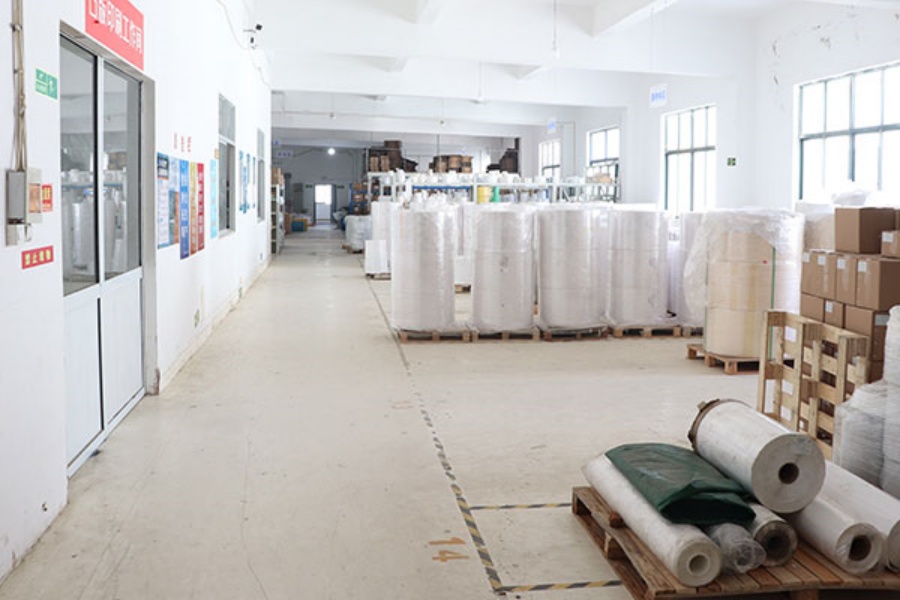
How is the self-adhesive label printing market segmented?
Publish Time: 2025-08-12
Compared to traditional labels, self-adhesive labels have advantages such as no need for adhesive, paste, or water, no pollution, and time-saving labeling. They have a wide range of applications and are convenient and quick to apply. Self-adhesive labels, also known as self-adhesive label materials, are a composite material made of paper, film, or other specialty materials, with an adhesive coated on the back and a silicone-coated protective paper as the backing. After printing and die-cutting, the finished label is produced. Currently, the global self-adhesive label printing market can be divided into three camps based on different printing methods. Flexographic printing is the leading technology for self-adhesive label printing in North America. The main equipment used is small and medium-sized unit-type printing units, primarily ink-based, using roll-to-roll printing and rotary die-cutting. These machines offer high production efficiency, advanced technology, and environmental compliance.Each half of the European market is dominated by letterpress and flexographic printing, similar to flexographic printing in the United States. Letterpress printing exclusively uses UV inks, and most equipment is stacked or satellite, with the material processing method also being roll-to-roll. In the Asia-Pacific region, where embossing and home printing are developing, label printing is relatively backward. Even in letterpress printing, only a minority use UV inks. Most label printing still uses resin-based inks, and both roll-to-roll and sheet-fed printing methods coexist. Due to the high rate of manual labeling, sheet-fed offset self-adhesive labels are widely used.Labels are primarily used in products and industries such as daily chemicals, cosmetics, electronics, pharmaceuticals, daily necessities, food and beverages, supermarkets, retail, and logistics. Current market demand for labels in daily chemicals, food, and medical products is particularly high.Globally, self-adhesive labels currently account for 40% of the market share, wet-glue labels for 42%, shrink labels for 9%, and packaging films (packaging labels) for 7%. Wet-glue labels and self-adhesive labels dominate the global label market. With the continuous development of the label industry and consumer demand for packaging, the number of self-adhesive labels processed in wet-glue printing will gradually decrease, while shrink sleeve labels will grow rapidly. The label printing industry will gradually expand demand for high-value-added adhesive solutions.With the entry of foreign label printing companies and products into China, the introduction of advanced equipment, technology and management experience has gradually nurtured the adhesive market. At present, China has been able to process a variety of high-end labels. Some of the products that were previously outside the label printing industry have been transferred to domestic processing. The main reason for this is the rapid development of domestic label printing.
Currently, the global self-adhesive label printing market can be divided into three camps based on different printing methods. Flexographic printing is the leading technology for self-adhesive label printing in North America. The main equipment used is small and medium-sized unit-type printing units, primarily ink-based, using roll-to-roll printing and rotary die-cutting. These machines offer high production efficiency, advanced technology, and environmental compliance.Each half of the European market is dominated by letterpress and flexographic printing, similar to flexographic printing in the United States. Letterpress printing exclusively uses UV inks, and most equipment is stacked or satellite, with the material processing method also being roll-to-roll. In the Asia-Pacific region, where embossing and home printing are developing, label printing is relatively backward. Even in letterpress printing, only a minority use UV inks. Most label printing still uses resin-based inks, and both roll-to-roll and sheet-fed printing methods coexist. Due to the high rate of manual labeling, sheet-fed offset self-adhesive labels are widely used.Labels are primarily used in products and industries such as daily chemicals, cosmetics, electronics, pharmaceuticals, daily necessities, food and beverages, supermarkets, retail, and logistics. Current market demand for labels in daily chemicals, food, and medical products is particularly high.Globally, self-adhesive labels currently account for 40% of the market share, wet-glue labels for 42%, shrink labels for 9%, and packaging films (packaging labels) for 7%. Wet-glue labels and self-adhesive labels dominate the global label market. With the continuous development of the label industry and consumer demand for packaging, the number of self-adhesive labels processed in wet-glue printing will gradually decrease, while shrink sleeve labels will grow rapidly. The label printing industry will gradually expand demand for high-value-added adhesive solutions.With the entry of foreign label printing companies and products into China, the introduction of advanced equipment, technology and management experience has gradually nurtured the adhesive market. At present, China has been able to process a variety of high-end labels. Some of the products that were previously outside the label printing industry have been transferred to domestic processing. The main reason for this is the rapid development of domestic label printing.

